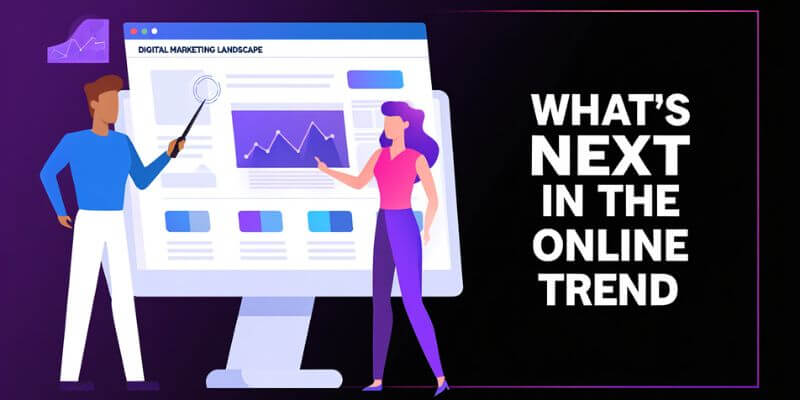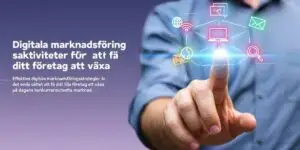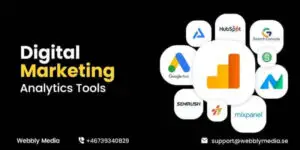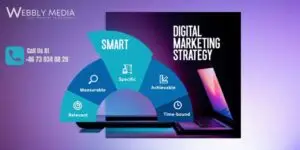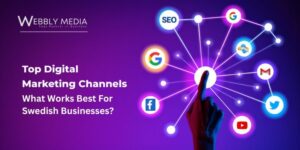In today’s fast-changing world, ”digital marketing landscape” has now become a commonly discussed term. But what does this term really mean?
In simple words, the digital marketing landscape refers to the complete online environment where brands connect with customers through channels like social media, search engines, websites, and ads. It’s the ecosystem that defines how marketing works in the modern world.
According to eMarketer, global digital ad spending is expected to cross $1 trillion by 2025. Moreover, currently, more than 70% of marketers are already using AI in their marketing strategies. These numbers clearly show how technology and automation are rapidly changing this landscape.
In this blog, we will look at current digital marketing trends, key channels, and future innovations shaping 2025. So, keep reading to learn more.
Why Businesses Should Understand The Digital Marketing Ecosystem?
In today’s competitive online market, businesses must stay updated on the online marketing ecosystem. Knowing this landscape helps you develop the right marketing strategy.
For example, some people spend more time on Instagram, while others prefer searching on Google or watching YouTube. But when you understand the marketing ecosystem, you can pinpoint where your target audience engages the most. This insight helps you choose the right platforms and create better campaigns.
Moreover, this also helps you identify which channels bring the highest ROI. This way, you can invest your marketing budget wisely instead of wasting it on less effective options.
In short, understanding the digital marketing landscape gives you control. It helps you make smarter decisions, reach your audience effectively, and stay ahead in the digital world.
What's The Current State of the Digital Marketing Industry?
The digital marketing industry has evolved rapidly in the past few years. Even 5 years ago, when SEO and Facebook ads were considered the mainstay of digital marketing, today the scenario has become completely different. New tools, technologies, and audience behavior are transforming the landscape.
Now, AI tools and short video platforms like TikTok, Instagram Reels, and YouTube Shorts are dominating the market. According to SQ Magazine, short videos are rated as the most effective content type by 67% of digital marketers in 2025.
At the same time, AI-powered personalization, automation, and data privacy controls are now key parts of digital marketing strategies. Marketers now balance creativity with compliance to build user trust and engagement.
In short, the online marketing landscape is more dynamic than ever. It is now driven by data, powered by AI, and constantly adapting to how people consume content online.
Components of Digital Marketing Landscape

The digital advertising landscape is built on several key components. These components help businesses reach, engage, and convert their target audiences. Let’s look at the most important ones below.
Marketing Tools
Tools like SEO software, analytics dashboards, automation platforms, and AI assistants are now at the heart of modern marketing. These tools help marketers make decisions based on data, work more efficiently, and see what works in each campaign.
Technology & Media
Brands connect with audiences through platforms like Google, Meta, and TikTok, as well as new media like podcasts and CTV ads. Today, both Paid and organic channels are important for reaching users effectively.
Target Audience
Knowing your audience is key. Audience segmentation, personalization, and behavior analysis help businesses create campaigns that meet people’s needs. For instance, a Swedish eCommerce brand might target young adults who care about sustainable fashion, sending messages that match their interests.
Performance Tracking
Tracking key performance indicators (KPIs), analytics, and ROI ensures your marketing activities stay on the right path. Analytics tools like GA4, SEMrush, and HubSpot make this process simple and transparent.
Major Channels Shaping The Digital Marketing Landscape
The modern online marketing landscape now relies on several key channels that help businesses connect with their audiences effectively. Platforms like social media, SEO, PPC, content marketing, video marketing, and email automation now play a central role in every brand’s online strategy. Each of these digital marketing channels contributes uniquely to building visibility, trust, and measurable results in today’s competitive digital market.
1️⃣ Social Media Platforms
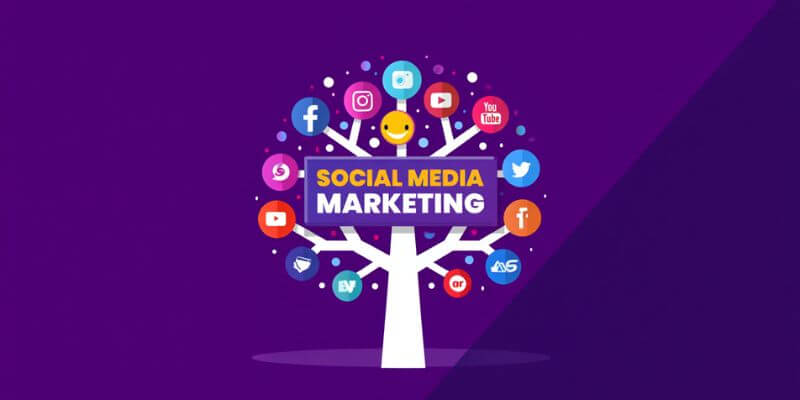
Platforms like Facebook, Instagram, TikTok, LinkedIn, and X (Twitter) are now at the center of today’s social media marketing landscape. They help brands to reach audiences quickly and build real connections through creative content.
A few years ago, social media was all about posts and likes. But in 2025, short-form videos, influencer-driven campaigns, and community-based interactions dominate.
Now, organic reach is going down, and relying only on paid ads won’t guarantee success. As a result, companies are investing more in community building and genuine interaction rather than one-time viral posts.
This change shows how social media is transforming digital marketing. It is making traditional marketing more dynamic and interactive day by day. Today, social media platforms help you give the following benefits:
✅ Brand Awareness and Reputation
Social media helps brands share their stories, be more visible, and gain trust. A steady presence builds credibility and improves reputation.
✅ Customer Engagement and Sales
These platforms allow direct chats, quick feedback, and personalized offers. This boosts engagement and drives sales naturally.
2️⃣ Search Engine Optimization (SEO)
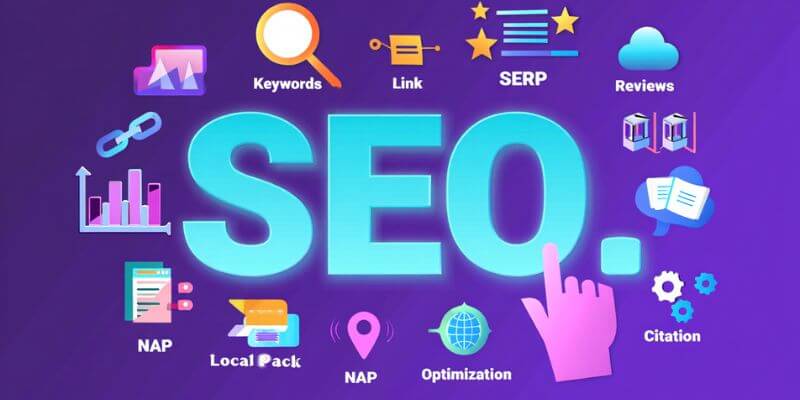
Search Engine Optimization (SEO) is one of the strongest pillars of digital marketing. It helps businesses appear on Google, Bing, and other search engines when people search for their products or services.
In the past, SEO mainly focused on keywords and backlinks. But in 2025, it’s all about E-E-A-T (Experience, Expertise, Authoritativeness, Trustworthiness), NLP (Natural Language Processing), and AI-driven content optimization. Search engines now focus more on helpful, human-like content rather than keyword stuffing.
With the rise of LLM models and AI search assistants, SEO strategies are shifting towards natural language and user intent. Also, local SEO has become vital for small and regional businesses to stay visible in nearby searches. SEO helps you by:
✅ Organic Traffic:
SEO helps websites attract visitors without using paid ads. It ensures long-term visibility and steady growth in traffic through relevant search results.
✅ Trust and Credibility:
Pages that rank high in search results are often seen as more trustworthy. Good SEO builds trust and shows customers that your brand is real and reliable.
3️⃣ Paid Advertising (PPC)
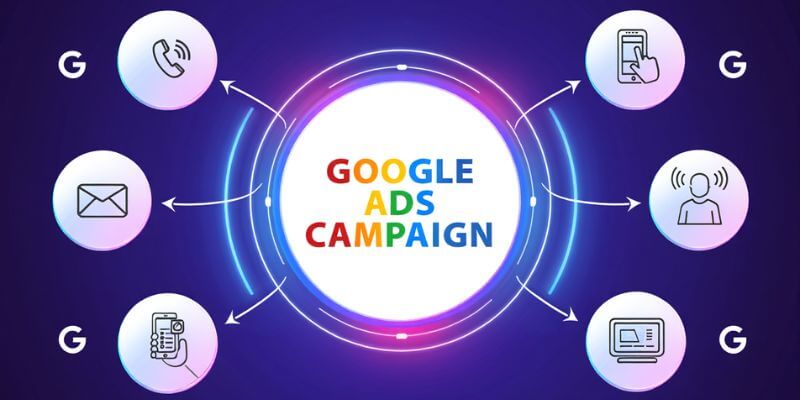
Paid advertising, also known as PPC (Pay-Per-Click), is a key way to quickly grow a business in digital marketing. In the past, PPC focused on manual bidding and keyword targeting. However, by 2025, this has changed a lot.
Now, AI-driven bidding systems like Google Performance Max and Meta Advantage+ automatically find the best audiences, ad placements, and timings to get maximum results. This automation saves time and improves ROI by learning from data in real time.
The approach has moved from managing many small manual campaigns to using smart, data-driven strategies. AI tools help advertisers make smarter budget decisions and reach their target audiences more effectively. The key benefits of Google Ads / PPC for businesses:
✅ Instant Visibility:
PPC helps brands appear at the top of search or social feeds instantly. This drives quick attention and traffic without waiting for organic growth.
✅ Fast Conversions:
Pay-per-click (PPC) campaigns help businesses get leads and sales quickly. With accurate targeting and AI tools, these campaigns deliver fast and clear results.
4️⃣ Content Marketing
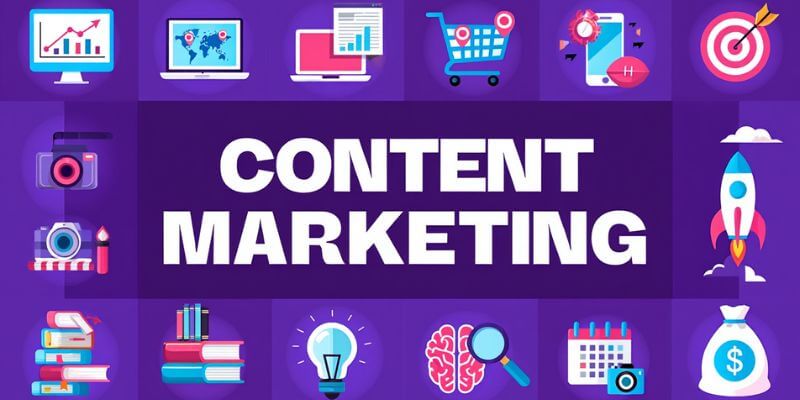
Content marketing is still one of the key parts of digital marketing. A few years ago, brands mostly focused on long blogs and written guides. But in 2025, the trend has evolved. Now, a mix of long-form blogs and short-form reels works best for reaching different audience types.
Topic clusters are still very important. This helps search engines understand the depth of your content and makes your brand more well-organized and credible online. At the same time, short-form videos keep audiences hooked and help spread brand messages faster.
In short, content marketing has become more balanced. It now focuses on both SEO value and storytelling.
✅ Build Brand Authority:
High-quality blogs and videos can help your brand be seen as an expert in your field. When people repeatedly find useful insights or helpful guides from you, they begin to trust your brand. This is how content marketing builds your brand’s authority.
✅ Support Other Channels:
Content acts like fuel for every other digital marketing channel. Well-written blogs help improve SEO rankings, while short videos increase social media engagement. Email campaigns also perform better when they include useful or interesting content.
5️⃣ Video Marketing

Video platforms like YouTube Shorts, TikTok, and Instagram Reels are now the heartbeat of modern digital marketing. They let brands share their stories in just a few seconds. This method is quick, visual, and emotionally engaging.
In the past, video marketing meant long ads on YouTube or TV. However, in 2025, short videos are taking over because audiences prefer fast, engaging, and genuine content. Creators and brands now focus on personal and relatable storytelling rather than polished ads.
This change is transforming the digital marketing landscape. Video is becoming the best way to capture attention and connect with people. From tutorials to product reveals, short videos boost visibility, engagement, and trust faster than ever. Key benefits of video marketing are:
✅ Builds Strong Emotional Connections:
Videos use pictures, sound, and emotions to make messages easy to remember. They help brands connect with people on a personal level and create a lasting impact.
✅ Enhances Brand Trust:
Real people, behind-the-scenes clips, and honest reviews make videos more trustworthy. When audiences see authenticity, it builds their confidence and long-term trust in the brand.
6️⃣ Email Marketing Automation
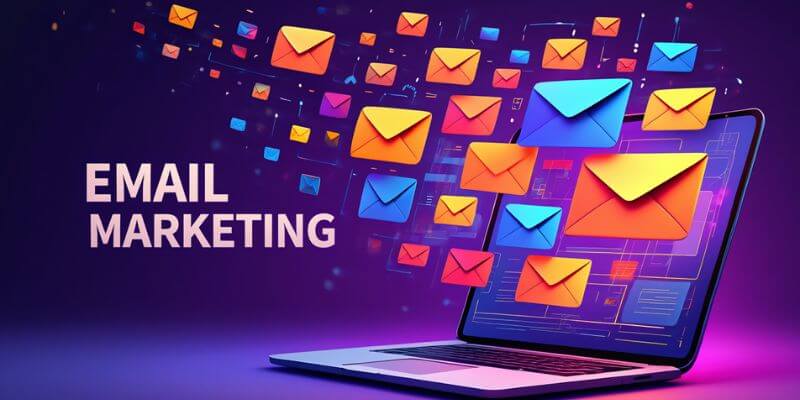
Email marketing is one of the most effective ways to reach customers online, but it has changed a lot. Today, it focuses on personalization, smart segmentation, and automation. Marketers use AI to create catchy subject lines, suggest products, and send emails that match user behavior.
In the past, businesses sent the same newsletter to everyone. But now, in 2025, email marketing is more dynamic. It is now powered by drip campaigns that collect leads step by step. Each message feels personal and relevant. This builds a strong connection with subscribers.
This evolution is shaping the digital marketing landscape by keeping brands connected with their audiences in a more human and data-driven way.
✅ Excellent for Retention & Sales:
Email keeps customers engaged even after purchase. Regular updates, offers, and reminders encourage them to shop again and build long-lasting loyalty.
✅ Deliver High ROI:
Email marketing is a cost-effective way to reach customers. It has low costs and can be automated, making it one of the most profitable digital marketing strategies.
Hot Trends of The Digital Advertising Landscape
Coming into 2025, many of us are seeing the digital marketing transformation in a sharp way. Today, following modern trends gives better results than sticking to traditional methods. Businesses that adapt to new strategies see stronger engagement and faster growth. Below are some of the top trends shaping the digital advertising landscape in 2025.
Artificial Intelligence and Automation
Artificial Intelligence (AI) is now a key part of digital marketing. It helps automate ad campaigns and personalize customer journeys. It is now changing how brands connect with their audiences.
Today, AI tools like ChatGPT, Gemini, and Perplexity assist marketers in creating content, analyzing data, and making quicker, smarter decisions. AI’s main strength is in predicting and personalizing user experiences.
➤ It helps you by:
- Tracking user behavior to predict next moves
- Delivering more relevant ads and offers
- Saving time while maximizing ROI
In the upcoming days, AI will keep improving by becoming more intuitive and human-like. It will help businesses create highly personalized experiences and manage entire marketing strategies with less human involvement.
✅ Human Creativity vs AI Efficiency
AI offers incredible speed and accuracy. It can quickly analyze large amounts of data, automate repetitive tasks, and optimize campaigns in just seconds. However, it does not have the emotional understanding or creativity that humans provide. Human creativity brings emotion, storytelling, and a unique brand voice that really connects with people.
In 2025 and beyond, success will not come from AI or humans alone. It will come from the right mix of both. AI is for data, and humans are for ideas and emotion.
Influencer Marketing and Transparency
Influencer marketing is not just a trend anymore; it’s a trusted digital marketing strategy. In the past, brands mainly relied on celebrities for promotion. But now, people trust relatable influencers more than famous stars.
As we look ahead to 2025, audiences appreciate honesty and real experiences more than flashy ads. That’s why transparency and clear disclosure of paid partnerships are now essential. Authentic storytelling allows brands to build long-term trust and a real connection with their followers.
Moreover, this shift towards genuine influence has made influencer marketing a key part of the online advertising landscape. Brands now focus on collaboration rather than one-time endorsements.
✅ Micro-influencers vs Mega-Influencers:
Micro-influencers give higher engagement, niche audiences, and genuine trust. Whereas, mega-influencers provide huge reach and visibility. Most brands get the best results by finding a good balance between both micro and mega influencers to achieve depth and scale.
Consumer Behavior & Data Privacy Trends
Today’s consumers are more careful about how companies use their data. People no longer trust ads without question; they want to know how their information is used and have control over it. This change is affecting how brands communicate with their customers.
Privacy-first marketing is now crucial. As third-party cookies are phased out, companies are using more first-party data and relying on consent for tracking. Personalized ads are still important, but they must respect user privacy and choices.
In Sweden and throughout the European Union (EU), the General Data Protection Regulation (GDPR) is a key part of digital strategies. Businesses must provide clear information about how they use data and ensure it is stored securely.
As a result, brands that focus on ethical marketing and building trust gain stronger customer loyalty. By 2025, respecting privacy will not just be a requirement; it will also be essential for building long-term relationships with customers.
Local vs Global Landscape of Digital Marketing

The digital marketing landscape isn’t the same everywhere. Each market has its own behavior, culture, and buying habits. By understanding these differences, brands can create effective strategies for both local and global success.
✅ Markets Diversity:
Developed markets use technology to drive marketing. It focuses on automation, data analysis, and personalized approaches. On the other hand, developing markets rely on affordability, mobile users, and social engagement. These differences shape how marketing campaigns are created and which platforms work best.
✅ Localization (Language & Culture):
Language and culture play a key role in how people respond to marketing. In Sweden, content that uses local language, humor, and values works better than generic English messages. Brands that adjust their visuals, tone, and timing build stronger trust with their audience.
✅ Strategy Differentiation:
Every brand needs its own approach. A global company may use multiple languages in its campaigns and rely on data to target audiences. In contrast, a local brand may focus on niche groups and building community connections. Customizing strategies for each market leads to better engagement and higher ROI.
Future of The Modern Digital Marketing Landscapes
The digital advertising landscape is evolving faster than ever. With rapid technological progress, the next 4–5 years will bring even more advanced tools and customer-focused strategies.
Experts believe that the future will be influenced by voice search, augmented reality (AR), virtual reality (VR), and highly personalized marketing. These innovations will alter how brands connect, advertise, and build trust with their audiences.
As artificial intelligence (AI), data analysis, and interactive media improve, marketers must adopt a mindset that combines creativity with smart technology. Businesses that adapt early to these trends will create stronger connections and achieve higher conversions in the coming years.
✅ Voice Search SEO:
With smart assistants like Alexa and Google Assistant, people now search by speaking. Brands need to focus on conversational keywords and a natural tone so their content shows up in voice search results.
✅ AR/VR Marketing:
Augmented reality (AR) and virtual reality (VR) are changing how brands advertise. Companies can now create 3D product demonstrations, virtual stores, and events in the metaverse. This allows customers to experience products before they buy them.
✅ Hyper-personalization Marketing:
Marketers can now use predictive analytics and real-time data to create content that matches each user’s interests. This personal approach significantly boosts engagement, customer loyalty, and conversion rates.
Get Professional Digital Marketing Help From Webbly Media

At Weebly Media, we have helped over 1,000 clients in Sweden over the last seven years. As a reliable digital marketing agency, we handle every project with care and creativity. Our certified experts focus on getting a good return on investment (ROI) for your marketing. We use the latest tools and technology to help businesses grow online and reach more customers. We offer everything from SEO to Google Ads for a strong digital presence.
➤ Why Choose Us:
- 7+ years of proven experience
- 5-star digital marketing services
- 24/7 online support, serving nationwide
- Affordable and transparent pricing
- Customer-friendly behavior
- 100% Satisfaction Guarantee
Check us out on Google and contact us today for expert help.
Frequently Asked Questions
Digital marketing covers all online activities to promote a brand, like SEO, content marketing, and paid ads. Whereas digital advertising is specifically about paid promotions, such as Google Ads, display ads, and social media ads.
AI enhances customer experience by personalizing messages, predicting needs, automating chat responses, and providing smarter content. This helps brands connect more quickly and meaningfully with their audience.
Key skills include AI SEO, data analysis, AI tools, content creation, and understanding consumer behavior. These skills help marketers create personalized and engaging campaigns across various online channels.
Data privacy builds trust with customers, prevents the misuse of personal information, and ensures compliance with laws like GDPR. Brands that protect user data gain better loyalty and long-term relationships with customers.
Small businesses can succeed by targeting specific niches, using local SEO, telling engaging stories, and utilizing automation tools for effective and budget-friendly online marketing.
Yes, influencer marketing is still strong in 2025. Micro-influencers engage authentically with their communities. This builds trust and leads to higher conversions compared to celebrity endorsements.
Brands can track success with key performance indicators (KPIs) like conversions, engagement rate, return on investment (ROI), and website traffic. They can use analytics tools such as Google Analytics, HubSpot, or Meta Ads Manager to help with this.

